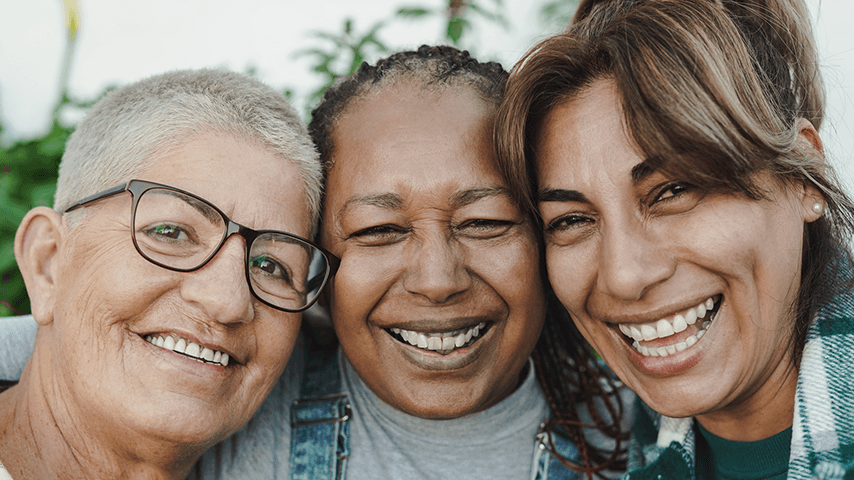
Related Topics
As part of their work to be an Age-Friendly Health System, Cedars-Sinai Medical Center in Los Angeles developed a program aiming to provide better care to older adults with fractures. After just one year, the program resulted in:1
- An 11% reduction in length of hospital stay
- A 41% reduction in time to surgery for adults 65+
- Direct cost savings of $300,000
The Good Samaritan Society-Quiburi Mission, which offers senior living and long-term care in Benson, Arizona, records what matters to residents on paper kept in a binder in the nursing assistant work area for easy reference. In addition to quarterly screening of dementia and depression, the program offers physical therapy, an exercise class, and facilitated walks to the dining room. One amazing result: a reduced rate of antipsychotic medications from 20.4% to 4.7%.2
Such successes are helping fuel not only a nationwide push for Age-Friendly Health Systems but momentum in other areas including higher education and public health. Consider the title of a session at the American Public Health Association’s 2024 Annual Meeting: Creating a Harmonious Age-Friendly Ecosystem That Delivers.
How can we do just that? Speakers at that session explained that we all have a role in creating an age-friendly ecosystem that values and includes older adults.
“We all benefit in an age-friendly society,” said Rani Snyder, MPA, Vice President of Programs at the John A. Hartford Foundation. But moving the needle on creating age-friendly systems in health, public health, and higher education is such a heavy lift because of ageism, she said. “Ageism magnifies a lifetime of inequities.”
What is an age-friendly ecosystem?
One definition of an age-friendly ecosystem shared during the APHA session:
A comprehensive, collectively built, ever-expanding platform whose goal is to improve quality of life for older adults through enhanced, collaborative impact.”
Age-friendly policies, practices, and communications rely on action and buy-in from:
- Health care systems
- Public health
- Education and research
- Cities, communities, and states
- Workplaces
- Home and community-based services
Trust for America’s Health is a driving force behind Age-Friendly Public Health Systems, which explore and expand public health’s role in healthy aging, advance partnerships, and expand federal, state, local, and tribal engagement. Age-Friendly Health Systems have the “4Ms” of What Matters, Medication, Mentation, and Mobility. The “6C’s” of Age-Friendly Public Health Systems:
- Creating and leading policy, systems, and environmental changes
- Connecting and convening multi-sector partners
- Coordinating existing supports and services
- Collecting, analyzing, and translating relevant data
- Communicating important public health information
- Complementing existing health promoting programs
At a TFAH-hosted age-friendly ecosystems workshop funded by the Hartford Foundation, one success shared was how CICOA (the largest Area Agency on Aging in Indianapolis) embedded one of their staff into a hospital (funded by the hospital) and created health care options counselor positions to assist with care plan and home transitions. The program saw a 40% drop in ER visits, said Megan Wolfe, JD, TFAH’s Senior Policy Development Manager.
One overarching finding Wolfe shared: funding needs to be flexible. And a common roadblock is that “age-friendly ecosystem work is not in our job descriptions. How do we deal with this?”
What are age-friendly universities?
Like age-friendly health systems can improve quality of care and health outcomes, as can age-friendly public health systems, the principles of age-friendly universities offer a helpful framework for what higher education can do to become more "open to the community and able to engage all generations,” said Aaron Guest, PhD, MPH, MSW, assistant professor at Arizona State University and Chair of the Secretariat of the Age-Friendly University Global Network.
The Principles of the Age-Friendly University launched in 2012. Those principles:
- To encourage the participation of older adults in all the core activities of the university, including educational and research programs
- To promote personal and career development in the second half of life and to support those who wish to pursue second careers
- To recognize the range of educational needs of older adults (to those who were early school-leavers to those who wish to pursue master’s or PhD)
- To promote intergenerational learning in order to facilitate the reciprocal sharing of expertise between learners of all ages
- To widen access to online educational opportunities for older adults to ensure a diversity of routes to participation
- To ensure the university’s research agenda is not just on them, but for them and with them
- To increase the understanding of students of the longevity dividend and the increasing complexity and richness that aging brings to our society
- To enhance access for older adults to the university’s range of health and wellness programs and its arts and cultural activities
- To engage actively with the university’s own retired community
- To ensure regular dialogue with organizations representing the interests of the aging population
Guest says there are 112 member institutions (eight in the U.S.). Their work aligns with some of the United Nations Sustainable Development goals, including Goal 4: Quality Education.
“Higher education is an important component of age-friendly ecosystems because we train the workforce, develop and evaluate interventions, and are situated in communities,” Guest said.
Just a few examples Guest shared: The University of Minnesota hosts Age-Friendly University Day and invites community members onto the campus and into classrooms, and the University of Illinois Urbana-Champaign is working with partners to become an Age-Friendly Community.
How we can end ageism
As Snyder said during the APHA session on age-friendly ecosystems, ageism is a persistent and difficult barrier to change. Ageism (discrimination based on a person’s age) in health care is particularly concerning as it can result in delaying or avoiding care and worse health outcomes.
Ageism in health care “robs the older person of their autonomy and sense of agency, and contributes to their sense of loss of control as they get older,” said Mark Brennan-Ing, PhD, Director of Research and Evaluation and Hunter College, CUNY, speaking during a Gerontological Society of American 2024 conference session. He said in health care, ageism tends to manifest in four areas:
- Deferential communication (using terms like “sweetie,” “honey," or addressing a family member instead of the older person)
- Stereotyping (“And unfortunately I think we all internalize this a bit, of older people being mentally incompetent, frail, slow…”)
- Undertreatment and overtreatment. Undertreatment, for example, can happen when providers believe health issues such as arthritis are “just a normal part of aging, learn to live with it.” Overtreatment can happen when a provider tries to address every symptom and forgets to focus on the 4Ms or someone’s functional ability and what they want their life to be. Brenna-Ing shared the example of a friend of his who had minor skin cancer on her face, but a dermatologist treated it very aggressively. “She spent the last summer of her life indoors recovering from surgery that was unnecessary.”
- Resource allocation (the ageist belief that we should be devoting our resources to younger people because they’re going to live longer)
“It’s very important that we make professionals working in aging and geriatrics aware of the problem,” Brennan-Ing said.
And as with many efforts to change culture, the people directly involved need a seat at the table.
“Older adults should be leading the way,” said Andrew Steward, PhD, LCSW, another speaker at the GSA session on Addressing Ageism in Health Care.
He mentioned the link between ageism and a host of health issues, including the fact that research has found internalized ageism, or how we as individuals feel about getting older, can add or subtract 7.5 years from our lives.
“We need to look at legal changes, policy changes,” Steward said. “I think it’s important for people to be aware and to continue to advocate.”
Incoming GSA President Marilyn Gugliucci, PhD, Professor and Director of Geriatrics Education and Research at the University of New England College of Osteopathic Medicine, said something as simple as dropping one word from our conversations can make an impact.
“When I hear students say, ‘Dr. G, you still run?’ What does that say? What does that word do? ‘Oh, you’re still working?’ That word ‘still’ needs to come out.”
It’s a small thing, but that is all part of the culture change that needs to take place,” Guglicuuci said. “Just to be conscious of a five-letter word like that can make a difference.”
How to help build age-friendly ecosystems
The age-friendly movement continues to grow, and there are many ways to be involved.
Those include:
- Help NCOA and other leading aging organizations combat ageism by telling a more complete story about aging in America
- Promote myhealthpriorities.org as a tool for older adults to use to define what matters most and share that with their health care providers
- Get to know your local commission on aging and find out if they are working on an age-friendly strategic plan, such as the SHAPE the Future of Aging plan in Fairfax County, Virginia, and join the conversation
- Visit the E4 Center of Excellence for Behavioral Health Disparities in Aging for tools to help empower community-based organizations to improve mental health care for older adults and their families
- Visit IHI.org to join an Action Community, follow Do-It-Yourself Participation or become Scale-Up Accelerator for Age-Friendly Health Systems
- Explore the Age-Friendly Public Health System guidance and resources available from TFAH
- Learn more about the AARP Network of Age-Friendly States and Communities based on the World Health Organization's Global Network for Age Friendly Cities and Communities
- Share your thoughts with the U.S. Administration for Community Living to help continue to shape the National Plan on Aging
“We are, all together, the ecosystem,” Snyder said. “We’ve got to do this together.”
Sources
1. American Hospital Association. Age-Friendly Health Care Improves Value for Older Adults with Fractures. Members in Action: Redesigning the Delivery System—Cedars-Sinai Medical Center. Found on the internet at https://www.aha.org/system/files/media/file/2021/02/value-initiative-member-in-action-case-study-cedars-sinai-medical-center-los-angeles-ca.pdf
2. Institute for Healthcare Improvement. Age-Friendly Health Systems Case Study: The Good Samaritan Society-Quiburi Mission. Found on the internet at https://forms.ihi.org/hubfs/CaseStudy-The%20Good%20Samaritan%20Society-Quiburi%20Mission%20%28Quiburi%29%2005-06-22.pdf



